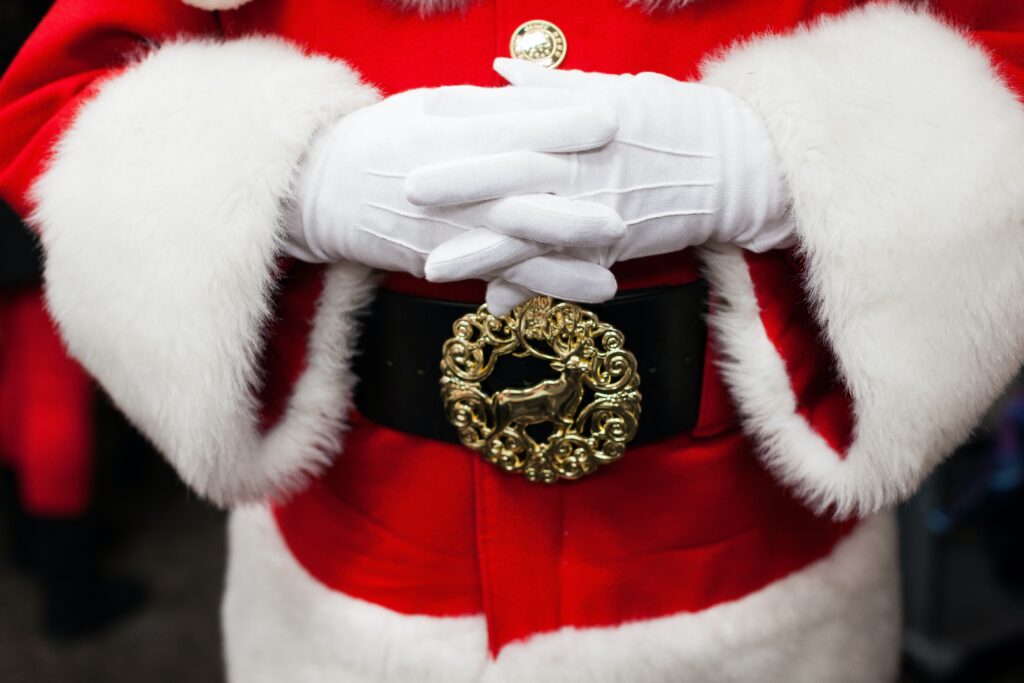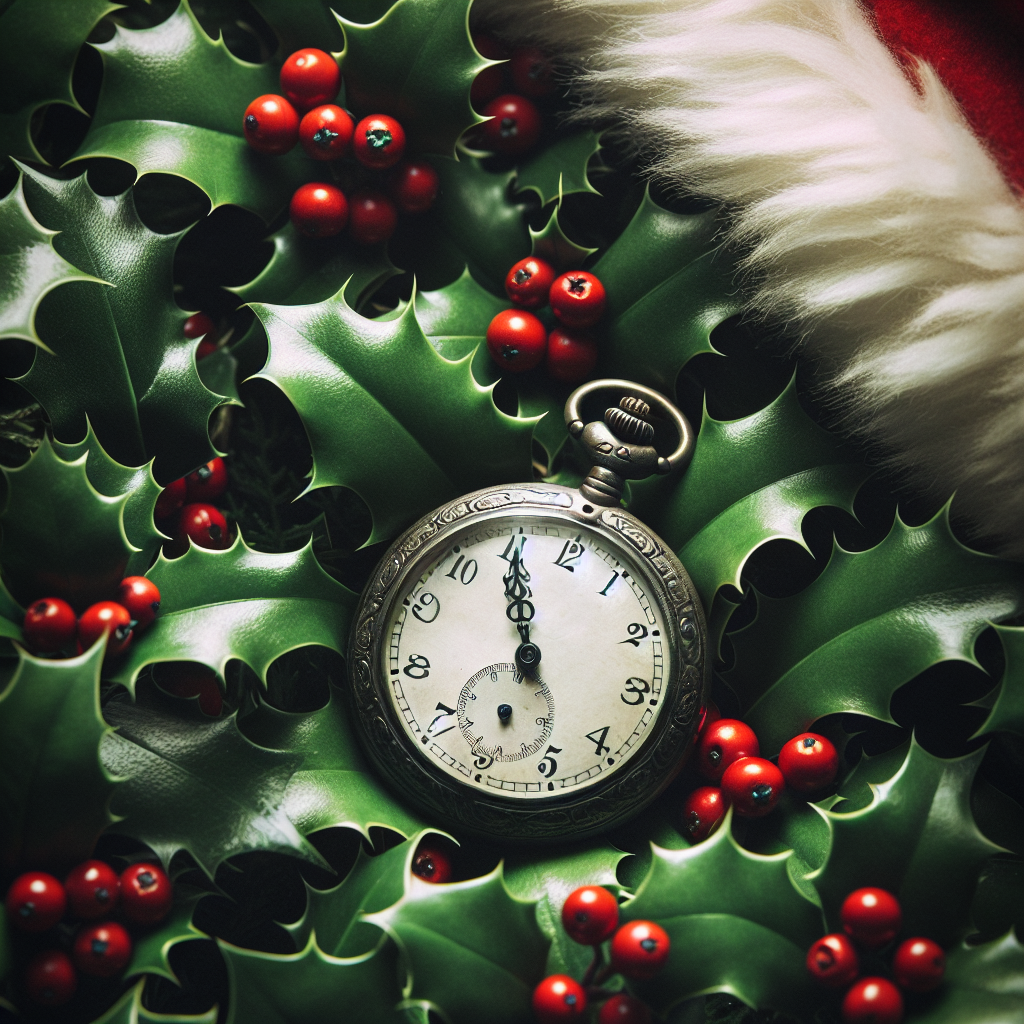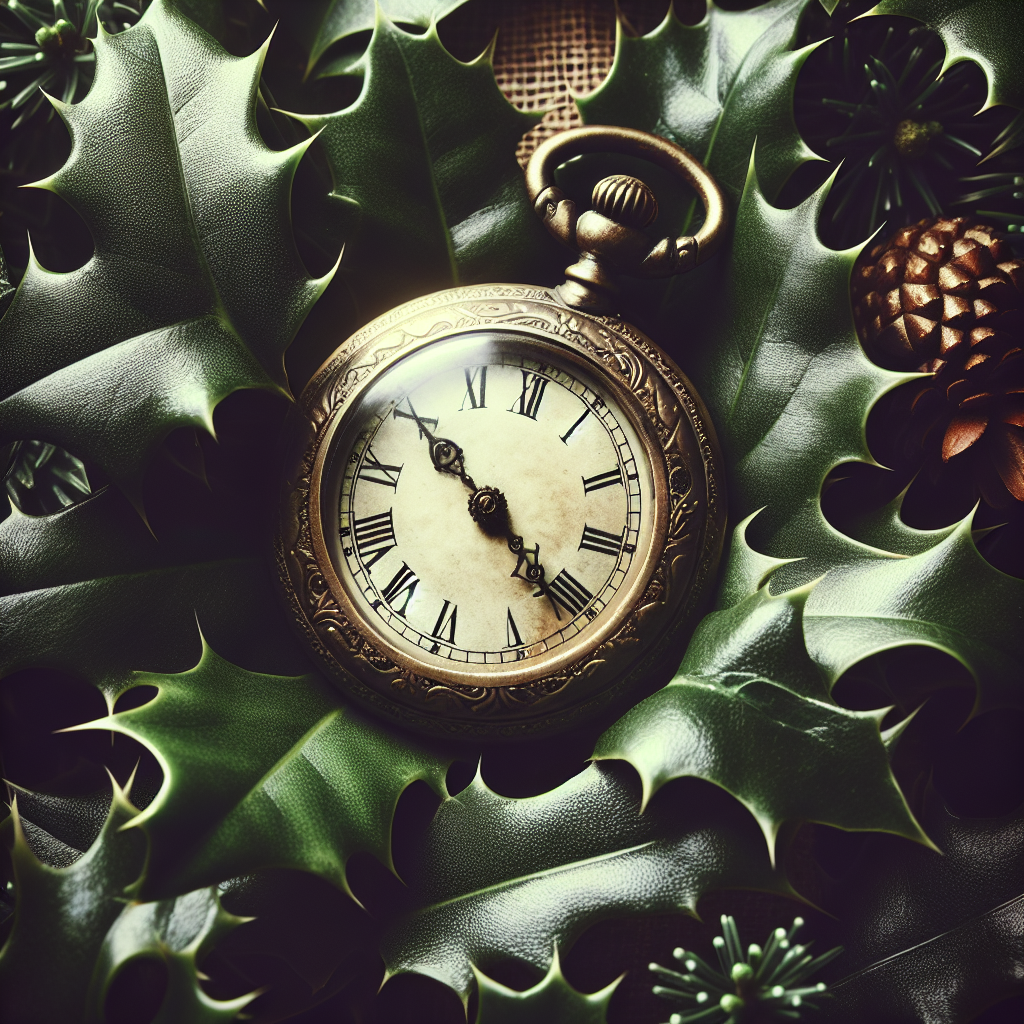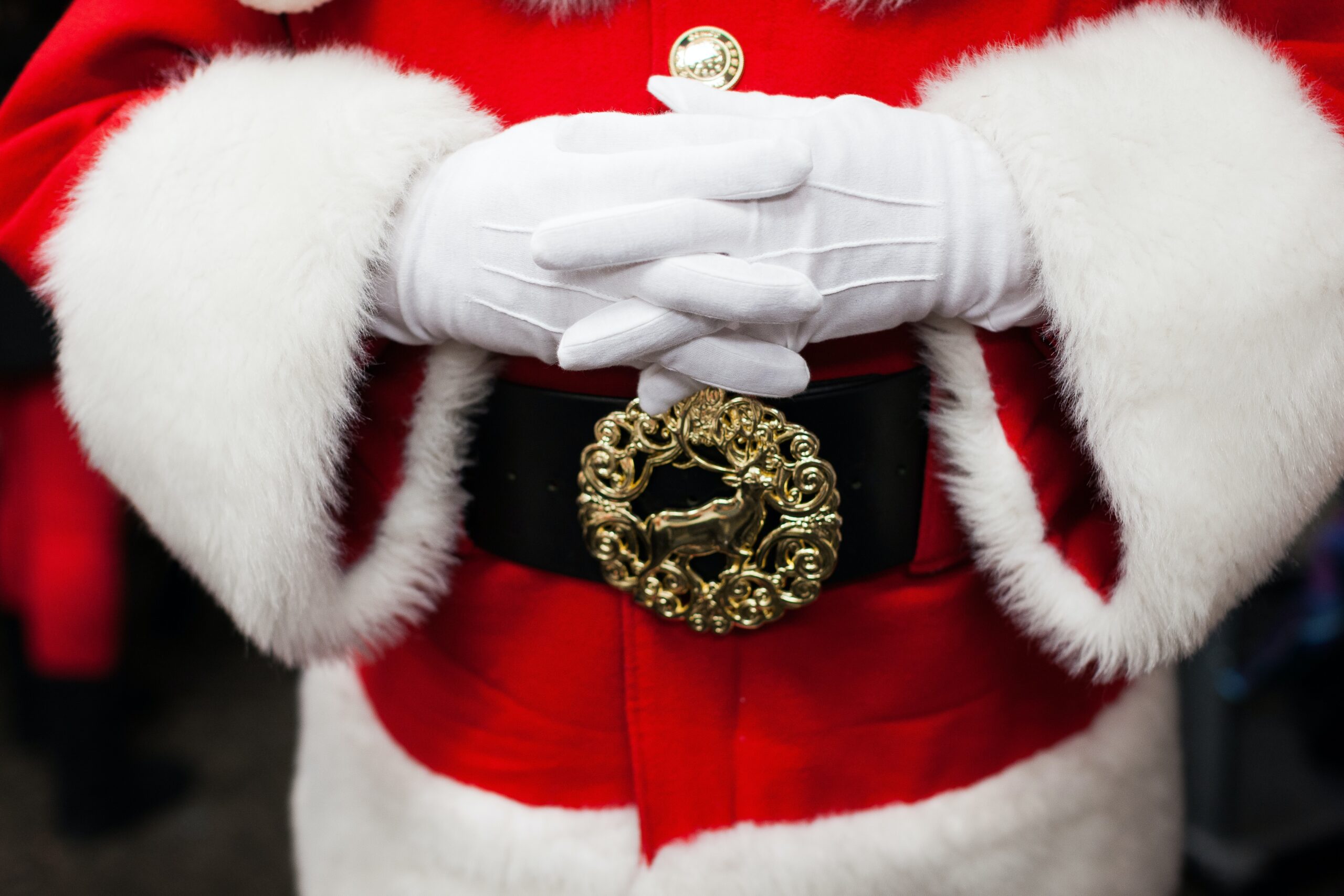Imagine the excitement and wonder that fills the hearts of children every Christmas Eve as they await the arrival of Santa Claus. But have you ever stopped to ponder just how old this jolly old man really is? In this article, we will uncover the age-old mystery surrounding Santa’s age, exploring the legends and myths that surround this beloved figure. From ancient tales to modern-day theories, join us on a journey to discover the true age of Santa Claus.

Table of Contents
The Origins of Santa Claus
Santa Claus, the beloved figure who brings joy and gifts to children around the world, has a rich and fascinating history that dates back centuries. To truly understand the origins of Santa Claus, we need to delve into the historical figure of Saint Nicholas and explore the pagan roots of many Christmas traditions.
The Historical Saint Nicholas
The story of Santa Claus begins with Saint Nicholas, a Christian bishop who lived in Myra, a town in modern-day Turkey, during the fourth century. Known for his generosity and kindness, Saint Nicholas became renowned for his reputation as the protector of children, sailors, and the poor. His legendary acts of kindness, such as secretly leaving gifts for those in need, laid the foundation for the modern-day figure of Santa Claus.
Pagan Roots of Christmas Traditions
While Saint Nicholas provided the inspiration for Santa Claus, many of the traditions associated with Christmas actually trace their origins back to pagan celebrations. The Romans, for example, celebrated Saturnalia, a festival honoring the god Saturn, during late December. This festival included gift-giving, feasting, and merriment, which closely parallel the traditions we associate with Santa Claus and Christmas today.
Evolution of Santa Claus
Over time, the depiction of Santa Claus has evolved and adapted to various cultural influences. From different physical appearances to expanding his role as a gift-giver, let’s explore the changing depictions of Santa Claus and the influential role played by Coca-Cola in shaping modern Santa Claus as we know him today.
Changing Depictions of Santa Claus
Santa Claus has undergone numerous physical transformations over the centuries. He was initially depicted as a tall and thin bishop figure, resembling Saint Nicholas. However, as time passed, his image evolved to become more jolly and robust, with a white beard, red suit, and a belly that shook like a bowl full of jelly. This enduring image of Santa Claus was popularized by the iconic illustrations of Thomas Nast in the late 19th century and has since become synonymous with the holiday season.
The Influence of Coca-Cola
Coca-Cola played a significant role in shaping the modern image of Santa Claus. In the 1930s, the beverage company launched an ad campaign featuring a plump, jolly Santa Claus enjoying a Coke. This depiction, created by the talented artist Haddon Sundblom, became so widely recognized and beloved that it solidified the image of Santa Claus we recognize today. The power of Coca-Cola’s marketing campaign forever transformed Santa Claus into a universally recognizable and beloved cultural icon.
Modern Beliefs About Santa Claus
Today, Santa Claus is commonly viewed as a magical figure who brings joy and happiness to children and adults alike during the Christmas season. Two prevailing beliefs about Santa Claus are that he possesses magical abilities and that he is an ageless being. Let’s explore these modern beliefs in more detail.
Santa Claus as a Magical Figure
One of the prevailing beliefs about Santa Claus is his magical abilities. According to popular legend, Santa Claus travels around the world in his sleigh pulled by reindeer, delivering gifts to children in a single night. These incredible feats of speed and generosity make Santa Claus a symbol of magic and wonder during the holiday season. Whether it’s his ability to fit down chimneys or his knack for knowing who has been naughty or nice, the magical element of Santa Claus adds to the excitement and wonder of Christmas.
Santa Claus as an Ageless Being
Another common belief about Santa Claus is that he is an ageless being. While the exact age of Santa Claus is a subject of debate, many people view him as immortal or timeless. This belief stems from the idea that Santa Claus has been around for centuries and will continue to bring joy to generations to come. Santa’s agelessness adds to his mystique and reinforces the notion that he is an enduring symbol of the holiday season.
Interpretations of Santa’s Age
The question of Santa Claus’s age has long fascinated both children and adults alike. While the popular belief is that Santa is immortal, some psychological theories offer interesting interpretations regarding Santa’s age and the perception of time in relation to him.
The Popular Belief: Santa’s Immortality
The most widely held belief is that Santa Claus is immortal. This belief is rooted in the idea that Santa’s magical abilities and timeless nature make it possible for him to continue his gift-giving duties indefinitely. From generation to generation, Santa Claus endures, ensuring the joy and wonder of Christmas for children all over the world.
Psychological Theories on Santa’s Age
Psychological theories offer intriguing perspectives on how we perceive Santa’s age. Some argue that our belief in Santa Claus is a reflection of our desire to maintain the innocence and wonder of childhood. By assigning Santa an ageless quality, we preserve the magic and excitement of the holiday season. Others suggest that Santa’s age fluctuates depending on an individual’s stage of cognitive development. Young children may perceive Santa as old and wise, while older children and adults may view him as perpetually young and full of energy.

The Magic of Santa Claus
Santa Claus’s connection to time adds an extra layer of enchantment to the holiday season. The perception of time in relation to Santa and the embodiment of the Christmas spirit contributes to the magical experience of the holiday festivities.
Perception of Time in Relation to Santa
For children, the anticipation of Santa Claus’s arrival on Christmas Eve creates a sense of excitement and wonder. As children eagerly await his visit, time seems to slow down, making the days leading up to Christmas Eve feel delightfully long. The belief in Santa Claus not only enhances the joy of receiving gifts but also instills a sense of wonder and excitement surrounding the holiday season.
Santa and Christmas Spirit
Santa Claus is closely associated with the Christmas spirit, which embodies joy, generosity, and goodwill. Believing in Santa Claus allows both children and adults to tap into the magical essence of the season, fostering a spirit of giving and kindness. The symbolism of Santa Claus serves as a reminder to spread happiness and love during the holiday season, creating a sense of unity and connection among people.
Santa’s Connection to Time
Santa Claus is often depicted as a timeless figure, perpetually associated with the holiday season and the joy it brings. His connection to time extends beyond the individual moment, linking him to the broader cycles of nature and the significance of the winter solstice.
The Timelessness of Santa Claus
Santa Claus’s timeless nature allows him to transcend the boundaries of ordinary time. While the years pass and generations change, Santa remains a constant presence, bringing happiness and warmth to children around the world. His timelessness is a testament to the enduring power of tradition and the magic of the holiday season.
Santa’s Association with the Winter Solstice
The winter solstice, the shortest day of the year, has been celebrated by various cultures throughout history. It is a time when the days begin to lengthen and a symbol of hope amidst the darkness of winter. Santa Claus’s association with the winter solstice is evident in the timing of his visits on Christmas Eve, coinciding with the eve of the solstice. This connection deepens the perception of Santa Claus as a figure of light and joy during a time of year often associated with cold and darkness.

Relevance of Santa’s Age
While the question of Santa Claus’s age may seem trivial at first, it holds symbolic significance that enhances the overall magical experience of Christmas. Appreciating the symbolism of Santa Claus’s age and preserving the mystery surrounding it contribute to the enduring allure of this beloved holiday figure.
Appreciating the Symbolism of Santa Claus
Santa Claus’s age represents more than just numbers. It symbolizes the spirit of giving, joy, and the ability to transcend time. By embracing the ambiguity surrounding Santa’s age, we embrace the wonder and enchantment that Christmas brings. The celebration of Santa Claus goes beyond his chronological age, reminding us to cherish the magical moments in life.
Preserving the Mystery of Santa’s Age
Preserving the mystery of Santa Claus’s age is crucial in maintaining the joy and excitement associated with him. By leaving his age undefined, we allow our imagination to soar and our sense of wonder to remain intact. This deliberate ambiguity adds to the charm and mystique of Santa Claus, reinforcing the belief in the magical spirit of Christmas.
The Joy of Believing in Santa Claus
Belief in Santa Claus is an integral part of many childhoods. The wonder and excitement it brings, along with the joy of receiving gifts, make believing in Santa an enchanting experience. However, the magic of Santa Claus doesn’t have to end with childhood. Adults can also play a vital role in keeping the magic alive.
Childhood Wonder and Santa
For children, Santa Claus represents the embodiment of magic and possibility. Believing in Santa inspires a sense of anticipation and excitement during the holiday season. The joy of waking up on Christmas morning to find gifts from Santa under the tree is a memory that children hold dear for a lifetime. The enduring belief in Santa Claus contributes to the formative years of childhood, fostering imagination and wonder.
Adults Keeping the Magic Alive
While childhood belief in Santa Claus naturally fades as we grow older, adults can play a crucial role in keeping the magic alive for future generations. By embracing the joy and wonder associated with Santa Claus, adults can continue to cultivate a sense of enchantment in their own lives and in the lives of those around them. Whether it’s through participating in traditions, reading stories about Santa Claus, or sharing in the excitement of the holiday season, adults can perpetuate the magic of Santa for both themselves and others.

Debates Around Santa’s Age
Despite the widespread belief in Santa Claus as an ageless figure, debates and discussions about his age continue to exist. Some argue for an aging Santa, while others question the need to assign an age to him at all. These debates add to the complexity and intrigue surrounding the beloved Christmas icon.
The Ageless Santa vs. the Aging Santa
There are varying viewpoints on whether Santa Claus should be portrayed as ageless or aging. Proponents of an ageless Santa argue that his immortality and timeless nature are part of his appeal and magic. They believe that assigning him an age would diminish his enchantment and detract from the joy and wonder he brings. On the other hand, advocates for an aging Santa suggest that showing him as getting older allows children to understand the passing of time and cherish the special moments they share with Santa throughout their childhood.
Questioning the Need for an Age
Some individuals question whether there is a need to assign a specific age to Santa Claus. They view Santa’s age as irrelevant to the magic and joy he represents. Instead, they argue that Santa Claus should be celebrated for the symbol of generosity and love he embodies, rather than focusing on his chronological age. This perspective emphasizes the timeless and universal qualities of Santa Claus that transcend the limitations of time and age.
Conclusion
Santa Claus, with his fascinating origins, timeless nature, and magical qualities, remains an iconic figure deeply ingrained in our holiday traditions and celebrations. The historical Saint Nicholas and pagan roots of Christmas traditions laid the foundation for the modern-day Santa Claus we know today. Whether he is seen as an ageless and immortal being or a figure who ages gracefully, Santa Claus continues to inspire joy, wonder, and the spirit of giving. As we embrace the enchantment of Santa Claus and preserve the mystery surrounding his age, we keep the magic alive and uphold the cherished traditions of the holiday season.


